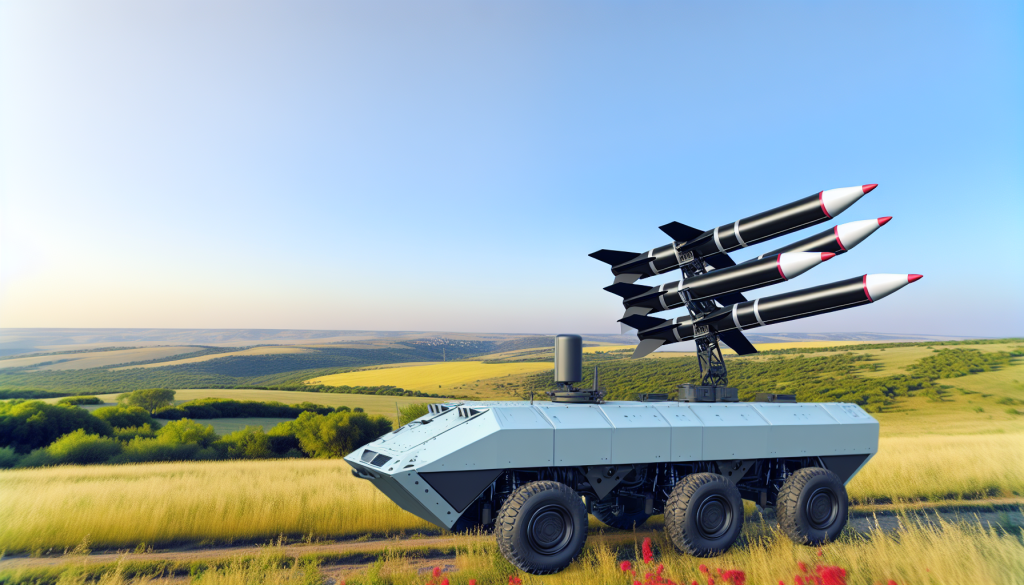Innovations in Military Technology: The Rise of Thales’ 70mm Rocket Against Drone Threats
The ongoing conflict in Ukraine has spurred rapid developments in military technology, particularly regarding counter-drone solutions. Among the advancements is a European-made 70mm laser-guided rocket from Thales, specifically designed to address the rising threat from Shahed-series long-range attack drones. This weapon has garnered attention in military circles for its innovative features and tactical advantages.
Advancements in Rocket Design
Thales’ 70mm rocket is engineered with an FZ123 airburst warhead. This warhead disperses thousands of small steel pellets, creating a lethal cloud that covers an expansive area, making it particularly effective against drones. The rocket shares similarities with the U.S.-made Advanced Precision Kill Weapon System II (APKWS II) but offers unique capabilities tailored to its intended operational environment.
The airburst warhead detonates to deliver its payload radially, with a blast radius of approximately 80 feet. This characteristic enables the rocket to engage multiple aerial targets simultaneously, making it an efficient response to swarming drone tactics frequently employed in modern warfare.
Production and Deployment
Thales is ramping up production of these rockets at its Herstal facility in Belgium, with ambitions to produce 10,000 annually by 2026. The rocket’s warhead contains two pounds of high explosives, and its design focuses on maximizing lethality, particularly against NATO Class II and III drones, which include medium-sized tactical systems like the Shahed. This ensures that Ukrainian forces have a capable tool to neutralize aerial threats effectively.
These rockets are being deployed in the field, launched from Mi-8 helicopters modified to carry NATO-standard launching systems. Ground-based deployments are facilitated through the U.S.-supplied VAMPIRE counter-drone systems, providing flexibility in operational strategies. Launched from Humvees, these systems complement aerial attacks and enhance ground forces’ abilities to secure the operational environment.
Tactical Considerations and Challenges
While the laser guidance system enhances targeting precision, it presents a set of challenges for operators, especially during adverse weather conditions. The operator must maintain a laser lock on the target until the rocket nears. If the signal is interrupted, the rocket transitions to a ballistic trajectory, potentially leading to unintended outcomes.
This operational challenge underscores the need for robust training and tactical coordination among units using these systems, possibly employing techniques like buddy lasing, where one aircraft designates the target for another, to ensure effective target engagement.
Cost-Effectiveness in Modern Warfare
One of the driving factors behind the adoption of Thales’ 70mm rocket is its cost-effectiveness. The pricing structure places it as a “low-cost missile” in the current defense market, especially when compared to traditional missiles like the AIM-9X Sidewinder and AIM-120 AMRAAM, which can exceed $400,000 and $1 million, respectively.
The guided section of the APKWS II costs around $15,000, making it accessible for nations needing large quantities of effective anti-drone weaponry. The affordability aligns well with Ukraine’s strategic needs, as they incorporate massed drone tactics into their operational framework.
The Future Landscape of Drone Warfare
The ability to counteract threats like the Shahed drones is becoming increasingly critical, especially given reports indicating a potential increase in production capabilities from Russia, which could lead to an annual output exceeding 50,000 drones. Thales’ development of the 70mm rocket is opportune not only for Ukraine but also for NATO allies looking to enhance their counter-drone strategies in light of emerging threats.
Countries across Europe are expressing heightened interest in these weapons systems as they reconsider their defense postures in response to recent incursions. The necessity for robust counter-drone strategies is clearer than ever, with Thales poised to provide effective solutions to meet these new demands.
Conclusion
Thales’ 70mm laser-guided rocket represents a significant advancement in military technology, especially in the evolving landscape of counter-drone warfare. Its innovative design, combined with cost-effectiveness and production capabilities, positions it as a pivotal element in ongoing defense strategies. As these weapons systems gain traction in Ukraine and beyond, they exemplify the dynamic interplay between technological innovation and operational necessity in modern military conflicts.

